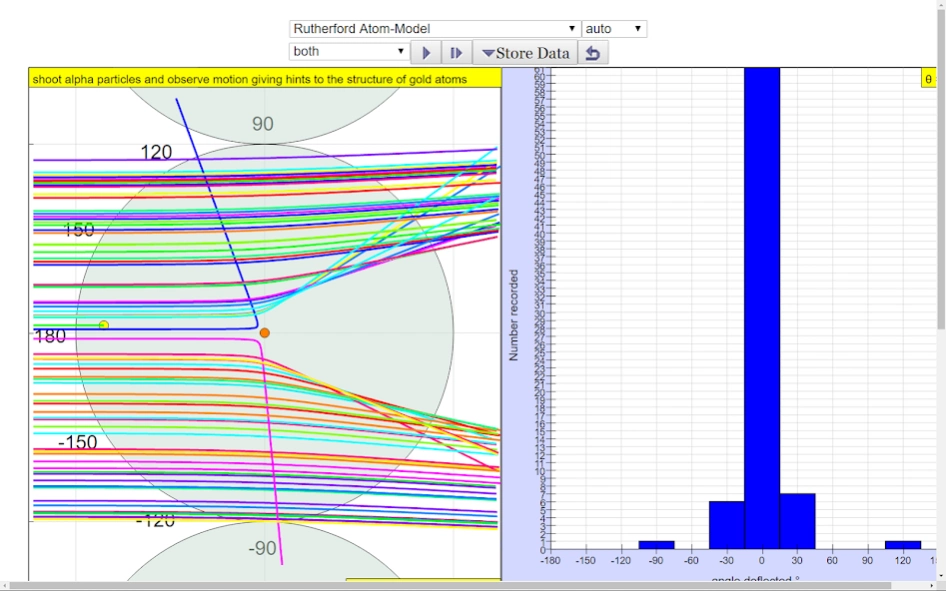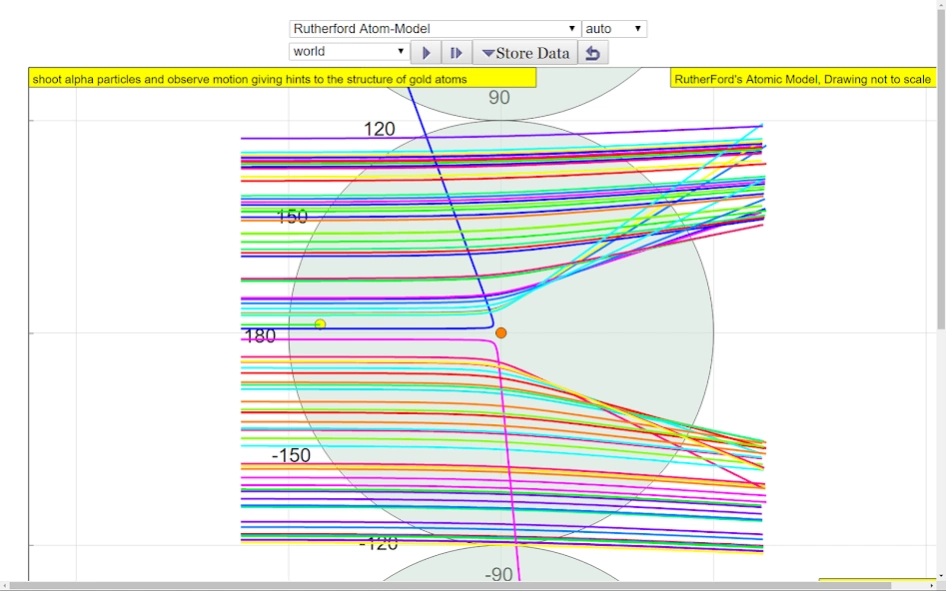Rutherford Atomic Virtual Lab 0.0.1
Free Version
Publisher Description
Rutherford Atomic Virtual Lab - open source physics Singapore simulation on Rutherford Experiment for A Level.
About
An open source physics at Singapore simulation based on codes written by Anne Cox, Wolfgang Christian, Francisco Esquembre, Loo Kang Wee and Tze Kwang Leong.
more resources can be found here
http://iwant2study.org/ospsg/index.php/interactive-resources/physics/06-quantum-physics
Introduction
The Geiger–Marsden experiment(s) (also called the Rutherford gold foil experiment) were a landmark series of experiments by which scientists discovered that every atom contains a nucleus where its positive charge and most of its mass are concentrated. They deduced this by measuring how an alpha particle beam is scattered when it strikes a thin metal foil. The experiments were performed between 1908 and 1913 by Hans Geiger and Ernest Marsden under the direction of Ernest Rutherfordat the Physical Laboratories of the University of Manchester.
The popular theory of atomic structure at the time of Rutherford's experiment was the "plum pudding model". This model was devised by Lord Kelvin and further developed by J. J. Thomson. Thomson was the scientist who discovered the electron, and that it was a component of every atom. Thomson believed the atom was a sphere of positive charge throughout which the electrons were distributed, a bit like plums in a Christmas pudding. The existence of protons and neutrons was unknown at this time. They knew atoms were very tiny (Rutherford assumed they were in the order of 10−8 m in radius[1]). This model was based entirely on classical (Newtonian) physics; the current accepted model uses quantum mechanics.
Thomson's model was not universally accepted even before Rutherford's experiments. Thomson himself was never able to develop a complete and stable model of his concept. A Japanese scientist named Hantaro Nagaoka rejected Thomson's model on the grounds that opposing charges cannot penetrate each other.[2] He proposed instead that electrons orbit the positive charge like the rings around Saturn.[3]
Rutherford thus rejected Thomson's model of the atom, and instead proposed a model where the atom consisted of mostly empty space, with all its positive charge concentrated in its center in a very tiny volume, surrounded by a cloud of electrons.
Interesting Fact
This simulation uses charge to charge calculation even for Thomson's Plum Model which we argue is more realistic than more other simulation which simply remove the effects of electrostatic forces. This simulation also promotes creativity and becoming like scientists by designing for movable or configurable protons for theory building processing which many other app do not have.
Acknowledgement
My sincere gratitude for the tireless contributions of Francisco Esquembre, Fu-Kwun Hwang, Wolfgang Christian, Félix Jesús Garcia Clemente, Anne Cox, Andrew Duffy, Todd Timberlake and many more in the Open Source Physics community.
About Rutherford Atomic Virtual Lab
Rutherford Atomic Virtual Lab is a free app for Android published in the Teaching & Training Tools list of apps, part of Education.
The company that develops Rutherford Atomic Virtual Lab is Open Source Physics Singapore. The latest version released by its developer is 0.0.1.
To install Rutherford Atomic Virtual Lab on your Android device, just click the green Continue To App button above to start the installation process. The app is listed on our website since 2016-08-18 and was downloaded 3 times. We have already checked if the download link is safe, however for your own protection we recommend that you scan the downloaded app with your antivirus. Your antivirus may detect the Rutherford Atomic Virtual Lab as malware as malware if the download link to com.ionicframework.rutherfordapp857799 is broken.
How to install Rutherford Atomic Virtual Lab on your Android device:
- Click on the Continue To App button on our website. This will redirect you to Google Play.
- Once the Rutherford Atomic Virtual Lab is shown in the Google Play listing of your Android device, you can start its download and installation. Tap on the Install button located below the search bar and to the right of the app icon.
- A pop-up window with the permissions required by Rutherford Atomic Virtual Lab will be shown. Click on Accept to continue the process.
- Rutherford Atomic Virtual Lab will be downloaded onto your device, displaying a progress. Once the download completes, the installation will start and you'll get a notification after the installation is finished.



